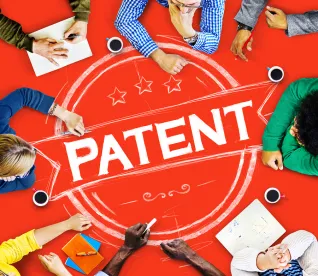It has now been over three years since the U.S. Supreme Court handed down its transformative patent decision in Alice Corp. v. CLS Bank. During that time, the Federal Circuit has issued only a precious few decisions upholding the validity of software patent claims. Thus, it is critical that patent applicants and practitioners understand the lessons that these cases offer and the hallmarks of software patent eligibility they establish. While clear eligibility rules remain elusive, the cases that have been decided provide valuable guideposts for drafting patent applications moving forward.
The post-Alice eligibility analysis uses the Supreme Court’s previously established two-step framework. Under Step 1, courts first decide whether patent claims are directed to an abstract idea. If they are found “not abstract,” that finding alone supports eligibility, and the analysis can end. If the claims are found to be directed to an abstract idea, under Step 2 courts decide whether the claims contain an inventive concept sufficient to ensure that the claims amount to “significantly more” than the abstract idea itself. If they do, they are deemed patent eligible. This post examines the Federal Circuit decisions upholding software patent claims on Step 1 grounds; we will also publish a second post that examines patent claims upheld on Step 2 grounds.
Generally, the Step 1 decisions show that for a claim to be found “not abstract”, the claim must be clearly directed on its face to a technical contribution that improves the conventional art. In this sense, Step 1 acts as a coarse filter, using general knowledge in the art as a reference point. A second common thread is that the reasoning for finding claims “not abstract” often draws on insights found only in the patent specification—i.e., not explicitly reflected in the claims. Thus, a compelling discussion in the specification of how the technical improvement overcomes specific deficiencies of the prior art can be helpful to clearing the Step 1 hurdle.
In Enfish, LLC v. Microsoft Corp., the patent claims covered an improved data structure called a “self-referential” database table, which reorganized the way data is stored in computerized tables. The specification explained how the new table was superior to existing database structures by allowing for faster data searching, more effective data storage, and more flexibility in configuring the database. The court found that, under Step 1, the claimed invention was not directed to “any form of storing tabular data” (i.e., conventional art), but was instead directed to “a specific type of data structure designed to improve the way a computer stores and retrieves data in memory.” In addition, the decision relied on the specification’s disparagement of conventional data structures, combined with language describing the present invention as a “flexible, self-referential table that stores data.”
In McRO, Inc. v. Bandai Namco Games, the claims related to software that employed a set of improved rules to automatically set facial animation “keyframes,” or select animation frames with specified attributes that allow the software to automatically draw intervening frames. This software removed the conventional need for an animator to manually set the keyframes, which the specification described as “very tedious and time consuming, as well as inaccurate due to the large number of keyframes necessary to depict speech.” The rules in the claimed method automated the process, specifically by determining when to set keyframes and then setting the keyframes. The specification also stated that, not only did the new rules greatly speed up the process for animators, but they also made the resulting animations more accurate and realistic. The court found the claims “not abstract” under Step 1, stating that they were clearly directed to specific transition rules that differed from traditional, manual ways to perform the same function.
In Trading Technologies Int’l v. CQG, the claims covered an electronic trading system with a graphical user interface (GUI) having a “static price axis,” which enabled traders to place trades more efficiently and accurately. According to the specification, conventional trading systems suffered from inaccuracy because order prices moved on the screen and traders often missed the desired price. The concreteness of the claims was key to the Federal Circuit’s finding: the court said that the claims “require a specific, structured graphical user interface paired with a prescribed functionality directly related to graphical user interface’s structure.”
In Thales Visionix v. U.S., the claims recited a unique configuration of inertial sensors and the use of a mathematical equation to calculate the location and orientation of an object relative to a moving platform. The specification described specific improvements that the claimed system achieved over conventional systems, including greater accuracy, the ability to operate independently without requiring other hardware, and simpler installation than previous systems. The Court found that the claims were far from claiming equations or abstract concepts themselves, but were instead directed to concrete systems and methods that “use inertial sensors in a non-conventional manner to reduce errors in measuring the relative position and orientation of a moving object on a moving reference frame.”
In Visual Memory v NVIDIA, the claims covered an enhanced computer memory system that used programmable operational characteristics that were configurable based on the type of processor used. The specification explained that such a memory system permits “different types of processors to be installed with the subject memory system without significantly compromising their individual performance.” Thus, the patent teachings obviated the need to design a separate memory system for each type of processor, which proved to be costly and inefficient, and at the same time avoided the performance problems of conventional memory systems. In finding the claims patent eligible, the court held that “the claims here are directed to a technological improvement: an enhanced computer memory system,” which relied on the specification’s disclosure that “combining the selective open page bias with the fast page mode offers faster access to main memory and increases system performance.”
Although clear eligibility rules remain elusive, the above cases show that patent claims are most likely be found “not abstract” under Step 1 if the claims on their face are plainly directed to a discrete technical improvement over the conventional art. The improvement is typically elaborated upon at some length in the patent specification. As with each phase of the Alice analysis, tightly tailoring the claim around the inventive contribution, and framing the invention as a solution to a technical problem in the specification, both remain important and are routinely referenced by the Court in decisions upholding patent claims as “not abstract.”
We will explore the contours of Alice Step 2 in a future post.





 />i
/>i

